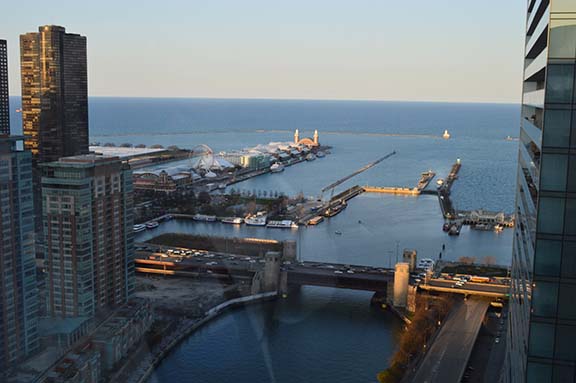
The InterOceanic Highway, completed in 2011, running from the Atlantic coast of Brazil to the Pacific coast of Peru.
By Denice Wardrop
Dear Family and Friends,
I’ve been thinking of you all during my travels, and thought that I would describe a bit of the journey to date to share. The class officially began with the student’s arrival in Lima in the evening of May 13. After a few days in Lima for orientation, and a trip to Machu Picchu and immersion in Incan civilization and history, we headed to the high Andes for field work and exploration, and I’ll start the story there.
The high Andes is indeed high; we spend much of our time 13,000-15,000 feet above sea level (for reference, Denver sits at 5,000 ft asl). The air is thin, the temperatures are cool, and the air is extraordinarily dry. The quality of the light is striking; clear, bright, making the edges of everything sharp and distinct (the view of the Ausangate Glacier on a sunny day will almost blind you). Most women that you see wear the traditional clothing: sandals, layers of gathered skirts with the outermost one of black that is highly embroidered, sweaters or a decorated short jacket, a hat that is distinctive of their community or region (e.g., tall felt hats, circular flat ones with a fringe of color that indicates martial status, embroidered and decorated), and finally the brightly colored, woven blanket that is fashioned into a backpack of sorts and tied in the front, that carries anything from babies and toddlers to bundles of grass for the ubiquitous guinea pigs that they raise in their homes for food (termed cuy). They often are spinning alpaca wool as they walk, their fingers moving so deftly and quickly that you barely detect movement. Men wear sandals, short black pants, a woven jacket or poncho, and often the knitted and decorated Andean hat with pompoms at the end of the chin ties. The colors of the Andes are the most true and clear red, accompanied by yellow, orange, green, and blue. Everything is made primarily of alpaca and wool, and lovely natural colors because of the organic dyes. Art is mainly in the form of woven textiles, which are proudly and obviously worn and used. The language is primarily quechua, the language of the Incas; it was originally not a written language, and is full of many hard “ch” and “k” sounds.
For the foodies that I know, the obvious thing to talk about is the potatoes. Estimates of the varieties of potatoes grown in the Andes varies, but somewhere in the range of 3000-5000 is not a stretch; six communities that have banded together to form the Parque de Papas (Potato Park) grow 1700 varieties alone. My favorite is the Qhuchan Waguchi, aka the potato-that-makes-the-daughter-in-law-cry, or the Mother-in-law-potato; it looks to be a formation of small bumps, and the worthiness of a young woman as a marital prospect is assessed on the basis of how quickly and well she can peel the potato. In comparison, the translation of the name for the white potato that we eat is “bland and insipid”. We have our students do a scavenger hunt in the market in Cusco, and one of the items is always a count of the number of varieties of potato; this year’s number was 57. The variations in texture and taste spoil you as a potato-eater forever. However, I still can’t answer my Dad’s only question, “Which is the best for potato pancakes?”. Perhaps the Qhuchan Waguchi?
Additional local culinary delights include alpaca, trout (framed in Andean lakes) and Quenhua. Quenhua, grown in the Andes from Colombia to Chile, exploded on the world market a few years ago due to its high nutritional value. This grain is found in many foods from breads to soups and stews. Just this past March we found out from our driver that 10 years ago they fed it to their chickens.
We also had the surprisingly good fortune to run into Karl Zimmerer at breakfast during our very first day in Lima; he was kind enough to give us a fascinating look into his own research into the biogeography of potatoes, corn, and quinoa, which set the stage magnificently for our time in the Andes.
Field work in the Andes involved putting our students into 4 sampling teams, each entrusted with a methane chamber (basically a capped two foot high section of 8 inch PVC pipe) and assorted sampling paraphenalia. We are working to characterize the carbon sequestration of bofedales (high altitude non-Sphagnum peat bogs). We measure the carbon sequestration potential by taking sediment cores, and measure the methane emissions so that we can determine the overall carbon storage (theoretically, wetlands are good at carbon storage in the sediment/soil because material decomposes much more slowly in wet environments, but these same wet conditions also increase the likelihood that they produce methane, which is a greenhouse gas 25x as potent as CO2; hence, you need to measure both to assess whether the environment is an overall carbon sink or source). The technique is a bit complicated (you are taking gas samples with a syringe from the chamber and transferring them to small vials), but the students do a great and careful job. The most difficult part of the field work is the hike down to the site and back up; what would be challenging in Pennsylvania or Denver is simply exhausting at 15,000 ft. But the scenery is astounding. It’s been described as, “being on the roof of the world”, and that is how it feels and looks. The glacier is above you, alpacas dot the steep slopes, and you are on this carpet of green and water that stretches down the valley for a kilometer or more. But it is also humbling and daunting. Usually about a quarter of the students experience symptoms of altitude sickness for a day or more that rise above the level of a slight headache. For twenty-year olds that have never been incapacitated by something as random as altitude sickness (it is individual physiology, not level of fitness), it is an emotional challenge (and so begin the life lessons). The Lodge that we stay at is pleasant, though, and the lack of central heating means that everyone ends up around the fireplace in the evenings in the gathering room, bundled in blankets while we have class. Thanks to a pico projector and my ipad, there is powerpoint in the High Andes (gasp). The students have commandeered the projector and the wifi for keeping us all up to date concerning Game of Thrones, so it’s had multiple benefits!
One aspect of this course that is both enriching as well as fun for us is the collection of “guests” that visit the group each with their own speciality and research interests. In Lima, Kristell, from the Center for International Forestry, is working on understanding carbon storage in Palm Swamps in Northern Peru; Jorge a professor of forestry, leads a MS in ecotourism major, and spoke of issues associated with tourism in Peru. In Cusco, Padre Luis (a Jesuit priest) and 2 colleagues talked about a variety of community projects in rural highland areas, each related to responses to climate change (e.g., biogas generation and solar panels). We have a few more scheduled for later in the trip.
We were all anxious to descend, and so everyone boarded the bus yesterday rather cheerily for an 8 hour ride down the InterOceanic Highway. The Highway was just completed in 2011, running from the Atlantic coast of Brazil to the Pacific coast of Peru, intended to facilitate the transport of soybeans from Brazil to Asian markets. It is an engineering feat (crossing the Andes and topping out at 15,500 ft), and our 8 hour road trip took us from glaciers, through cloud forest, to Amazonian headwaters, dropping more than 14 of the 15,000 feet in this time span. I suggested to the students that some music might make the trip go faster, and so they constructed a 135-song playlist. And so we watched ecosystems go by to the tunes of Tom Petty, Goo Goo Dolls, Billy Joel, Michael Jackson, Maroon5, with some rap and C&W thrown in for good measure. It’s amazing how much of the playlist was from the ’70s and ’80s, making Joe and I feel somewhat at home. At least we knew the words to much of it.
We are now on our way up the Rio Madre de Dios (translation: River of the Mother of God), to the Los Amigos Research Station. We are in the rainforest, in one of the most biologically diverse spots on the planet. We travel in a long, outboard “canoe”, just a long, narrow boat with rows of seats on each gunwale, holding about 20 people. Boat time is some of my favorite time, which is advantageous because today‘s ride is 5 hours long. We are going upriver, the river is wide and brown and full of sediment; the driver is quite skilled at avoiding the downed trees along the way, both visible and submerged. There is quite a bit of alluvial gold mining along the banks, small operations leaving behind conical piles of rocks and gravels and mercury in the sediments and fish. This is a major environmental challenge for Peru, and it is a complicated social and economic issue, as well. We will talk about it a lot as a class, as well as the other livelihoods such as ecotourism. Boat time is also a great time for relaxed natural history observation; for Joe and I it’s a refresher course, for our students it can be a bit overwhleming (a thousand shades of green). Joe and I are trying to remember the group of trees that we learn each year and promptly forget once back in Pennsylvania.
More about our project and the rainforest later; we will be at a series of eco-lodges after our stay at Los Amigos. We are all well and grateful for the experience, but missing our family and friends as we go. Cheers!






